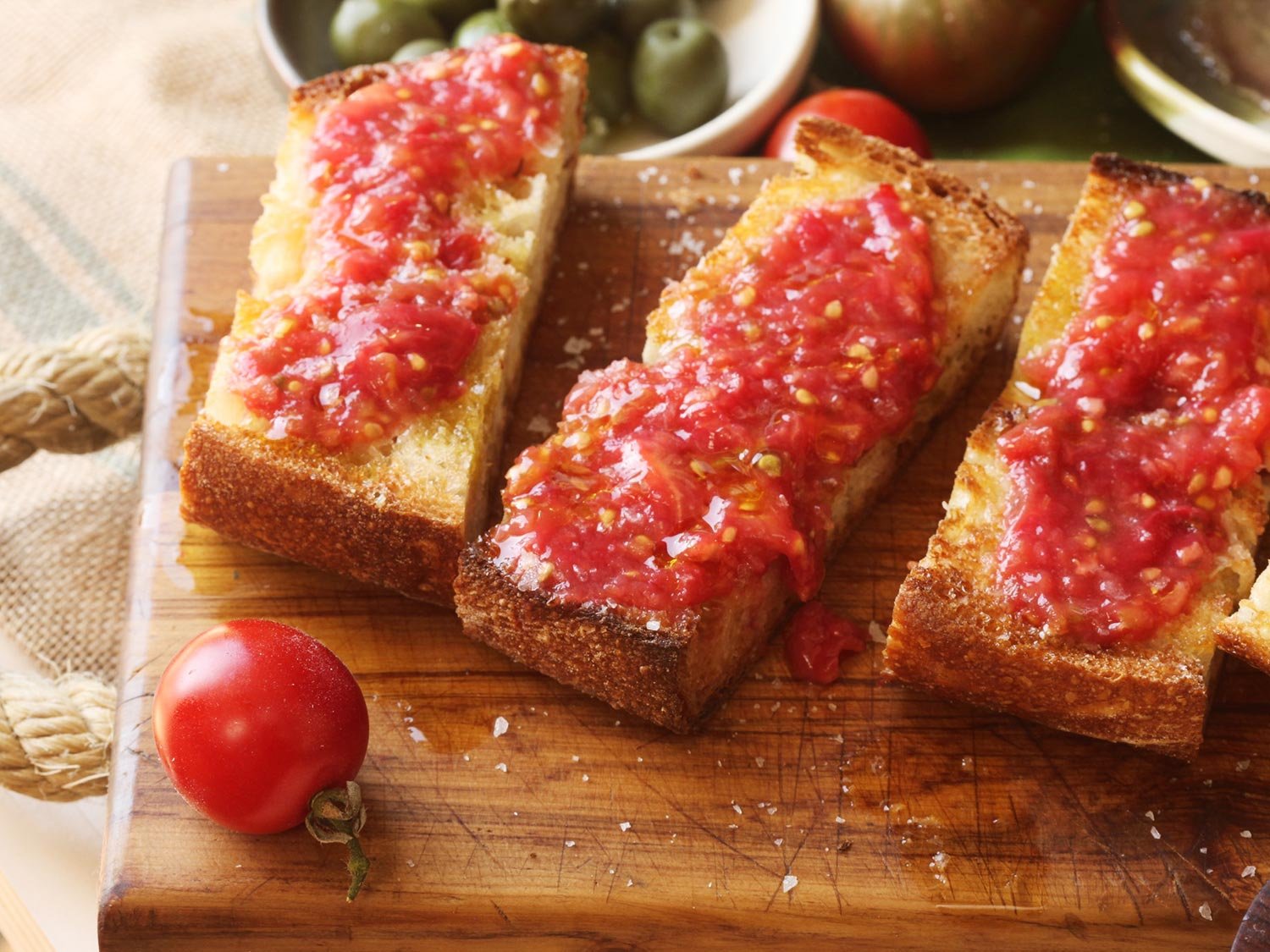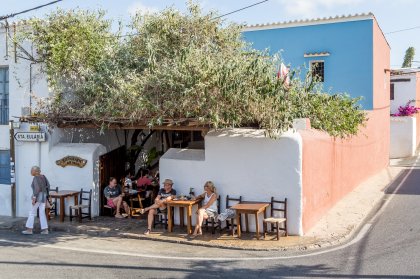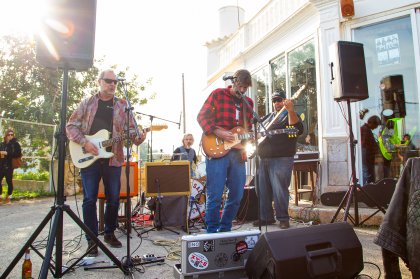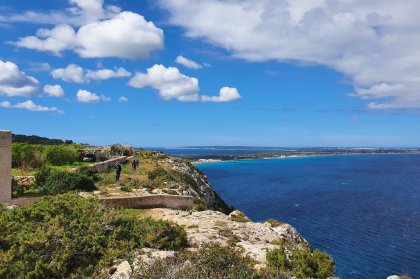A popular breakfast and starter, pan con tomate or simply bread, tomato, salt and local olive oil
Many visitors are drawn to Ibiza and Formentera to enjoy the every growing gastronomic scene. New and innovative restaurants are springing up all over the island, offering us the chance to dine on exotic recipes in beautiful locations. However we think it is a good time to reflect on the diversity of local recipes, which have been handed down through the generations for centuries, food which is traditional on both islands.
Historically, the occupants of a typical country finca or farmhouse would all be involved in working the land, producing food. Most smallholdings would include a pig and a small flock of sheep and goats which, besides providing meat and wool, would help to fertilise and maintain the land, pruning the fruit trees into the interesting shapes we see today.
A common feature of most fincas is the large stone bread oven attached to the side of the house. Fired with thin pine branches to a high temperature, these ovens could produce large quantities of bread at a time. Consequently, due to the labour intensity, families would take turns to produce bread for their local community on alternate days.
Following are our suggestions of breakfasts and snacks you should try while visiting Ibiza and Formentera.
If you would like to see the rest of our article series on Ibizan and Formenteran gastronomy, click on the links below and discover more about the islands' delicious culinary past and present.
PART 2 MAIN MEALS
PART 3 DRINKS
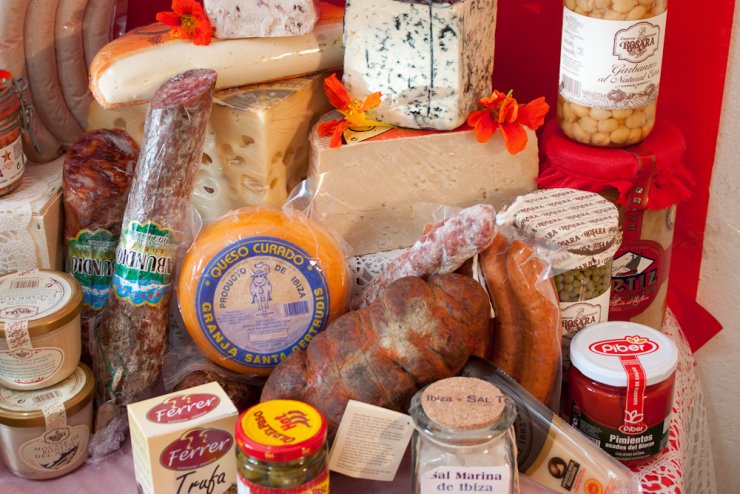 A selection of local Ibizan food products
A selection of local Ibizan food products
Breakfast
Many Ibizans, the Eivissencs in the local Catalan dialect, like to start the day with the typical breakfast staple of pan con tomate - a slice of pa pagès, rustic bread toasted under a grill, then smeared with crushed tomato pulp, olive oil and salt. It's delicious also with melted cheese and/or Serrano ham and is commonly served with coffee and a glass of fresh orange juice. Sounds simple? Yet every bar/café seems to have its own slight variations, making it fun to seek out your favourite.
We would recommend stopping at the small cafeteria Can Guillem in San Agustín, if you are passing by, for a tostada made with a little bit of extra love. It is also possible to enjoy this delicious breakfast at any other time of the day in a number of iconic Ibizan locations: at ham specialists, Bar Costa, in the peaceful, traffic-free village Santa Gertrudis, or gazing at the calm waters of Talamanca beach at Bar Flotante. Read our full article on recommended places to have breakfast on Ibiza here.
Pastries
Spain is the largest producer of almonds in Europe and a significant quantity of those come from Ibiza. Almond trees are very sensitive plants and only grow under very restricted conditions. They bring unimaginable beauty to the island in February during the spring bloom. Any one lucky enough to visit the island out of season will have certainly enjoyed this phenomenon.
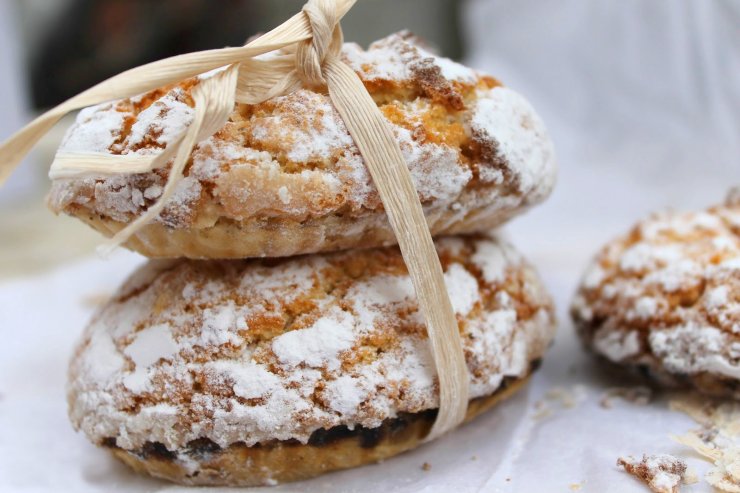 Magdalenas Ibicencas: deliciously sweet and light
Magdalenas Ibicencas: deliciously sweet and light
Almond production brings wealth to the rural areas of the island and, naturally, they find their way into the local bakery. Almonds are celebrated in one of the island's favourite pastries - Magdalenas Ibicencas, made from a puff pastry base with an almond marzipan filling and topped with more almonds and icing sugar. Check out historic bakery Forn Vadell on Carrer de Canàries just off Avenida España in Ibiza Town for one of the best examples around.
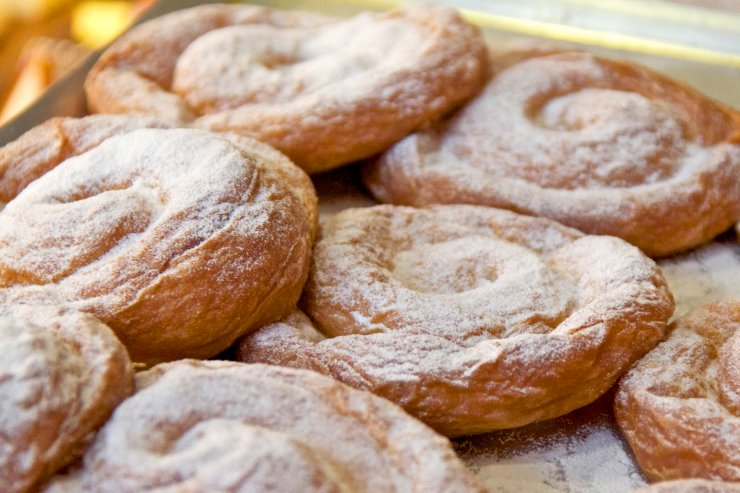 Plain ensaimadas
Plain ensaimadas
Originally from Mallorca, the ensaimada is a swirl of light, fluffy pasty which is delicious with a morning coffee. You can find them plain, with only a sprinkle of powdered sugar, filled with light cream or stuffed with 'angel hair', the strands found inside pumpkins and cooked with sugar. These again are excellent at bakery Forn Vadell.
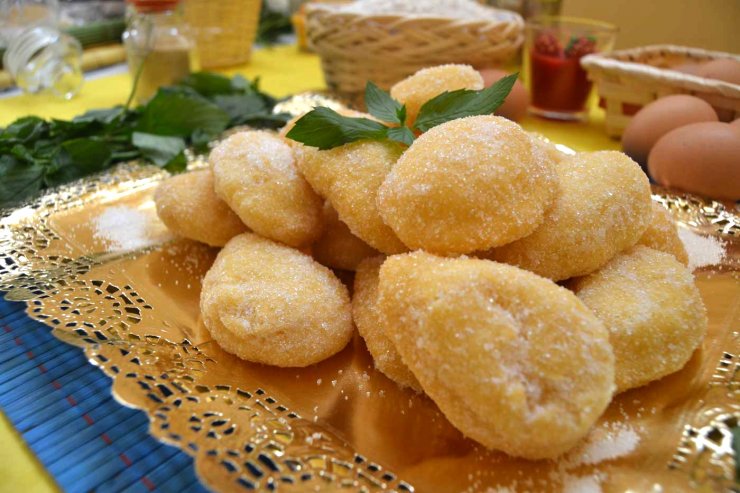 A favourite at local fiestas, Orelletes
A favourite at local fiestas, Orelletes
Orelletes, meaning 'ears' in Catalan, are served in large quantities at most special occasions. These pastries are fried, like flat doughnuts, and then doused in sugar. As with many things Ibizan, the flavour of anise is never far away.
Traditional products and savoury snacks
An important date in traditional Spanish rural life is the matanza, the time when a family slaughters their pig, which they have been fattening up all year. People from the village join together to assist with dismembering the animal, ensuring that nothing goes to waste. It's a very important part of rural life, bringing families together and feeding the community. Lard from the animal is an essential ingredient in many of the local pastries.
In Spanish the generic name for using leftover meats to make sausages is embutidos and two of the best produced in Ibiza are Botifarró and Sobrassada. As with most traditional sausages, they are far tastier than they look or sound.
 Typical Ibizan sausages by Companatge
Typical Ibizan sausages by Companatge
Sobrassada is made from finer, lean cuts of meat than many typical sausages and is spiced with pimentón, Spanish smoked red paprika, giving it its defining reddish colour. The contents can be smoothly spread onto bread and toasted under the grill. Flavour can vary depending on where you buy your Sobrassada as many producers add spicy pimentón to give it a nice kick. Botifarró can be either white or black, depending upon the amount of added blood, and is more like a traditional British sausage. Both varieties are very meaty.
 Warm or cold at any time, empanadas
Warm or cold at any time, empanadas
Empanadas are simply pies, usually filled with red peppers, tuna or meat, mainly pork and many other varieties. They are sold as individual pies for one person or sometimes bigger ones for bigger appetites or to share. They are very similar to the pies or pasties made in other countries and can be bought, if you are lucky, still hot from most pastelerías.
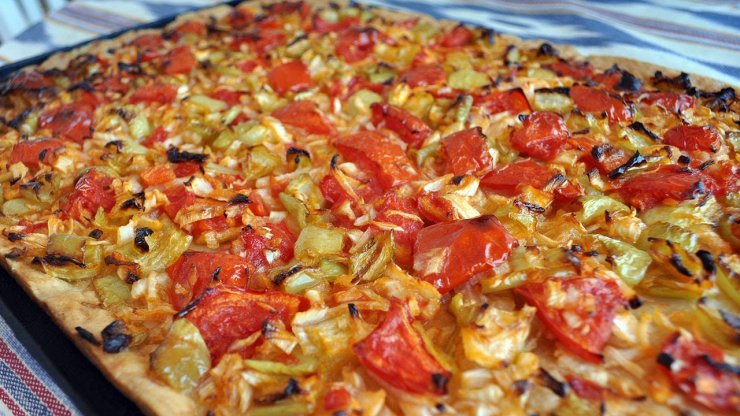 Typical coca with red peppers and onions
Typical coca with red peppers and onions
A coca is a popular snack sold throughout Catalonia and on these islands; it's a common snack for rich and poor alike. Cocas have a shortcrust base made with oil, rather than butter, and can be topped with just about any combination of ingredients, both sweet and savoury. Cocas have similar cousins in most Mediterranean countries but, on Ibiza the favourite varieties are decorated with roasted red peppers or Swiss chard and pine nuts and can be found in all decent bakeries.
Cheeses
Local cheeses are largely produced from goat's or sheep's milk. There is a wide range to choose from, from soft fresh cheeses to aged, mature ones. You can find many cheeses preserved in a wrapping of vine leaves or rolled in a thick herb crust.
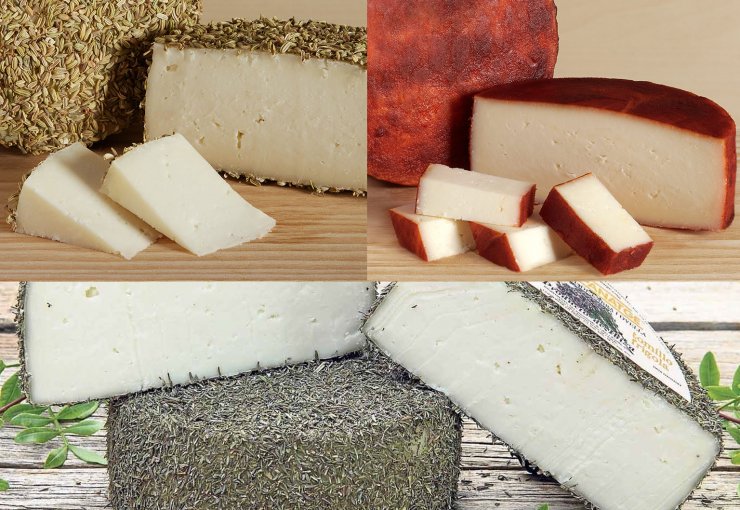 Varied local cheeses
Varied local cheeses
For a browse of some traditional products made on the island, have a look at the online shop of local Ibiza producer Companatge.
We hope you get to try a few traditional local dishes during your visit to Ibiza. Anyone wishing to find out more about the culinary history of Ibiza and Formentera, or to try some local produce, should contact Ibiza Food Tours.
So there you have it: how to breakfast and snack on Ibiza. Now it's time to think about lunch and dinner so let's move mouthwateringly on to main meals on Ibiza and Formentera. Bon profit!
For an island wide selection of restaurants to suit all tastes and budgets, head to our restaurant guide.
